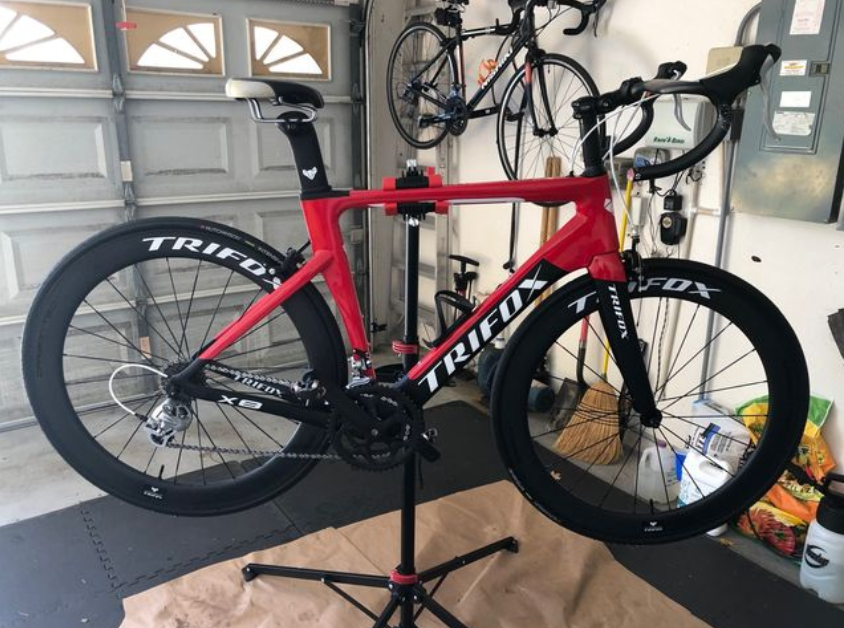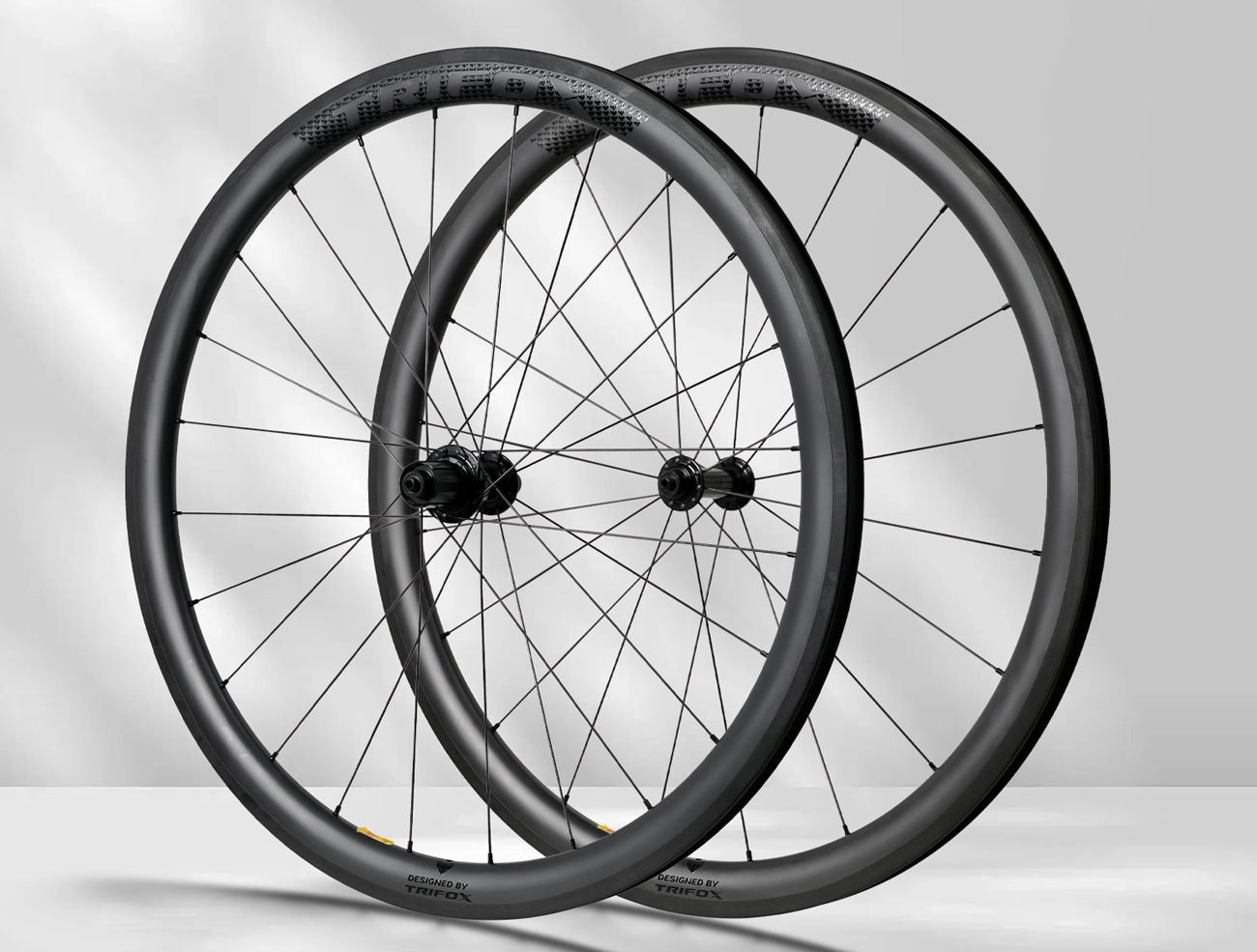Carbon fiber is an incredible material that has completely changed the design and performance of bicycle frames. It is lightweight, corrosion-resistant, can be molded into various required shapes and is very strong in use. The claim that carbon fiber frames and related parts are generally brittle and unreliable is not true, but just alarmist. It is strong enough to be used in F1 and the aerospace industry, and there is no doubt that it is naturally used in the bicycle field.

If it is produced by a credible manufacturer and used correctly, there is no reason why the carbon frame will not give you enough mileage to ride happily, and now many manufacturers provide a lifetime warranty for the frame. No matter what frame material you choose, whether it is a carbon frame, a steel frame, aluminum alloy, or titanium alloy, quality is the key, and good quality is always more durable. Riding a carbon frame bike, you don’t need to deliberately change some cycling methods, but you can pay attention to the details of the daily maintenance and use of some carbon fiber bikes.
Buy a torque wrench
Despite the incredible force performance in the design direction, squeezing can easily damage the carbon fiber, such as over-tightened bolts and clamps, handlebars, and seat posts are the most common causes of damage to the carbon fiber frame. All parts of a carbon fiber bicycle will be marked with a recommended torque value in Newton meters, which can be found on the relevant parts, manuals, or on the manufacturer’s official website. If you have a carbon fiber bike, a torque wrench is necessary, it can ensure that you will not use more than the recommended torque to tighten the components. If you have previously owned a bicycle with a metal frame, you may be surprised that the force required to assemble and adjust a carbon fiber bicycle is so small.
Use carbon assembly paste
The relatively small torque required for the carbon frame and its components also has the drawback that it is easy to slip off. This especially affects the Seatpost. Don’t risk trying to tighten the Seatpost with extra, more force, you should use carbon assembly paste. This is a gel containing fine particles, similar to a thin film, which increases friction between the contact surfaces to prevent slippage. Assembling paste and torque wrench are necessary for carbon fiber bicycle owners.
Be careful
Damage to the carbon frame caused by accidents or collisions is usually difficult to predict and avoid in advance, but some collision events that damage the carbon fiber can be easily avoided. A common situation is when the handlebar is rotated and hits the upper tube of the frame. This often happens when the bicycle is inadvertently lifted. So be careful not to let this happen when picking up the bike. In addition, try to avoid stacking bicycles on other bicycles, and do not use the seat part to lean on poles or pillars, so that the bicycle will easily slip and cause a collision with the frame. Leaning the bike on a surface such as a wall is much safer. Of course, you don’t need to be too nervous to wrap your bike with cotton wool. You just need to be more careful and take reasonable precautions to avoid unnecessary collisions.
Keep it clean
Regular cleaning can give you a chance to inspect the bike carefully to see if there are obvious signs of damage. Regardless of the material of the frame, this should be your routine during cycling. Of course, rough cleaning also needs to be avoided, which will damage the epoxy resin wrapped around the carbon fiber. If you have any questions about how to clean your bike scientifically, you can consult the manufacturer for advice. Any degreaser or cleaning products for bicycles and old-fashioned mild soapy water should be used appropriately and reasonably.
Avoid squeezing
As mentioned above, try not to over-tighten the parts. Carbon fiber is easily damaged by extrusion. Therefore, you need to be especially careful when using a repair rack or an onboard bicycle rack to clamp the frame tube. The bicycle should be fixed with minimal pressure, or a protective layer can be wrapped on the frame. Of course, you can also consider changing to a bicycle transportation method. If you want to take your bicycle on the plane, we strongly recommend using a hard special box for packing.
Don’t reverse
For metal frames and parts, for example, during the installation process of handlebars and Seatposts, it is normal and acceptable to give a certain amount of rotation or pull for fine adjustment after being fixed. However, this step will cause damage to the carbon fiber bicycle and must be strongly avoided. The correct way is to use the recommended torque value and use the assembly paste. If the position and angle of the parts need to be adjusted, the parts should be completely loosened in advance.

Measure twice, cut once
If you need to cut carbon fiber parts, such as handlebars and the entire Seatpost, remember to measure carefully and accurately, and wrap it with tape as a mark for the cutting part. Cutting requires a special carbon saw blade, which can prevent fiber tearing and abrasion. . Never use a pen or sharp tool to mark the position on the seat post that needs to be cut, because even a small scratch may damage the carbon fiber. Instead, you can use insulating tape to paste and wrap it to mark the cut position.
Avoid chain jamming
Many people have encountered the situation of chain drop, especially when shifting gears incorrectly. In the worst case, the chain gets stuck between the smallest chainring and the chainstay after the chain is dropped, and it gets stuck instantly. For carbon fiber bikes, this is a great “pain”. When this happens, stop pedaling immediately and avoid further exertion. After returning home, thoroughly clean and relubricate your drive system. Check your chain, including wear, elasticity, etc. It is best to replace it if necessary.
Replace the brake pads
If you use alloy training wheels and carbon fiber racing wheels alternately, replacing your brake pads accordingly is the most basic. Although there are dual-purpose brake pads, the remaining metal fragments on the surface of the brake pads can easily scratch and destroy the carbon fiber rim.
If the worst happens
In the event of a crash or accident, unlike the metal frame, where the depression or bending damage can be clearly seen on the exterior, the carbon fiber may appear to be undamaged on the exterior, but it has actually been damaged. If you have such a crash and worry about your frame, be sure to ask a professional technician to do a professional inspection. Even serious damage can be repaired well. Even if the aesthetics are not perfect, they can at least guarantee safety and function.



















































































